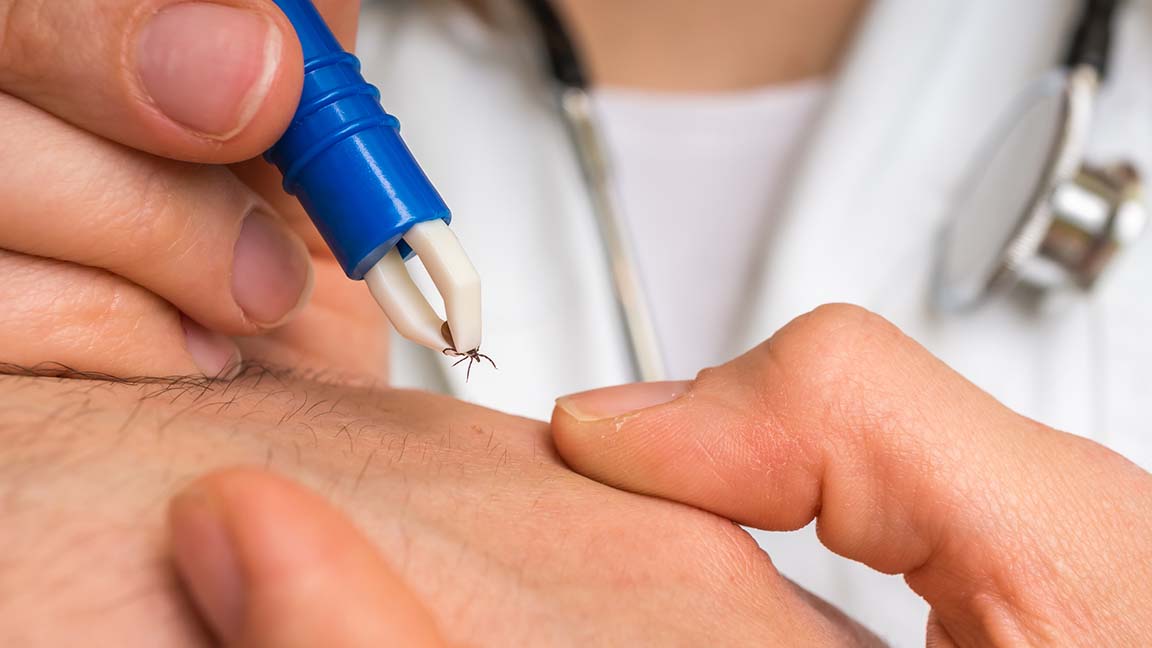They’re out there waiting. They’re ticks, and you could be their next meal.
In South Carolina, ticks can bite year-round. As we spend days outside, we’re bound to cross paths with these tiny bloodsucking arachnids.
That can be a problem because ticks can transmit a multitude of diseases, from anaplasmosis and Lyme disease to Rocky Mountain Spotted Fever and tularemia.
In South Carolina, people often encounter six kinds of ticks: The blacklegged, lone star, American dog, brown dog, Gulf Coast and Asian longhorned tick.
Dr. Sean Nguyen, a family medicine physician at Tidelands Health Family Medicine at The Market Common, has seen a recent increase in tick bite concerns among his patients.
“Myrtle Beach has seen a significant increase in patients moving from the North who are very familiar with tick bites,” Dr. Nguyen says. “Lyme disease is more likely to be found in the Northeast, and, hence, the migration of people from the North to our area has increased awareness.”
Lyme disease, a bacterial infection transmitted by deer ticks, is uncommon in South Carolina, but it can happen, Dr. Nguyen says.
Avoiding tick bites
So how do you avoid tick bites?
The best approach is to avoid ticks. Since ticks wait for you to come to them, that means staying away from the places they like to hang out, such as tall grass, leaf piles and densely wooded areas.
If you’re going to be in those areas, apply bug repellent with DEET to deter the hungry hitchhikers.
It’s also a good idea – albeit a challenging one in the heat – to cover up: wear long sleeves and long pants and tuck your pants into your socks so ticks have a tougher time finding a way to your skin.
And, finally, be sure to check yourself for ticks after you’ve come inside. They’re drawn to warm areas on your body, such as your groin and armpits. You can also find them on the backs of your knees, along the waistband of your pants, and even in your belly button, among other areas.
Removal and treatment
If you find a tick embedded in your skin, promptly use tweezers to grip the tick as close to the skin as possible and pull gently but firmly straight out to help ensure no parts break off. Afterward, clean the bite with soap and water followed by an antiseptic such as iodine, hydrogen peroxide or rubbing alcohol.
Enjoying this story? It’s free to republish. Learn more.
If possible, keep the tick in a sealed container while you monitor yourself over the next several weeks for symptoms such as a rash, fever, nausea or sensitivity to light. Keeping the tick may help with treatment. If you experience symptoms associated with a tick bite, seek prompt medical care.

Bio
Dr. Sean Nguyen is a family medicine physician practicing at Tidelands Health Family Medicine at The Market Common in Myrtle Beach. A native of Myrtle Beach, Dr. Nguyen speaks English and Vietnamese.
Learn MoreMedical Education
Education
Wofford College, Medical University of South Carolina
Internship
Tidelands Health MUSC Family Medicine Residency Program
Meet the Expert
Dr. Sean Nguyen
Dr. Sean Nguyen is a family medicine physician practicing at Tidelands Health Family Medicine at The Market Common in Myrtle Beach. A native of Myrtle Beach, Dr. Nguyen speaks English and Vietnamese.






